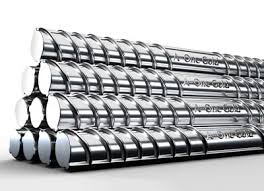The steel price industry is a vital component of the global economy, underpinning infrastructure, construction, automotive manufacturing, and countless other sectors. However, the pricing of steel is notoriously volatile, influenced by a complex web of factors that range from supply chain dynamics to shifts in demand. This article provides an in-depth analysis of the factors that drive steel price fluctuations, offering valuable insights for industry stakeholders, including manufacturers, investors, and policymakers.
Understanding Supply Chain Dynamics
At the core of steel pricing lies the intricate supply chain that encompasses the extraction of raw materials, production processes, and distribution networks. The steel production process begins with sourcing essential materials such as iron ore, coking coal, and scrap metal. Each of these inputs has its own market dynamics and can be subject to price fluctuations based on factors like mining production rates, transportation costs, and global demand.
Supply chain disruptions can significantly impact steel prices. Events such as natural disasters, political unrest, and pandemics can lead to interruptions in the availability of raw materials. The COVID-19 pandemic serves as a stark example, where lockdowns and logistical challenges disrupted supply chains globally, resulting in shortages of key materials. As economies began to reopen, the pent-up demand for steel surged, leading to dramatic price increases as suppliers struggled to catch up.
The Role of Raw Material Costs
The costs of raw materials are a crucial determinant of steel prices. Iron ore and coking coal are essential inputs, and their prices can be highly volatile, influenced by global demand, mining output, and geopolitical tensions. For instance, significant demand from China—one of the largest consumers of steel—can drive up the prices of these raw materials, subsequently increasing steel prices. Conversely, if there is an oversupply of iron ore due to increased production, it can lead to lower raw material costs and, in turn, stabilize or reduce steel prices.
Demand Factors and Economic Indicators
While supply chain issues and raw material costs are vital, demand trends are equally significant in understanding steel price fluctuations. The demand for steel is closely tied to economic activity, particularly in construction and manufacturing sectors. As economies expand, investments in infrastructure, housing, and industrial projects typically increase, driving up steel demand.
Economic indicators, such as GDP growth rates, industrial production levels, and construction spending, provide critical insights into potential shifts in demand. For example, a robust increase in construction activity often correlates with rising steel prices, as higher demand puts pressure on available supply. Conversely, in times of economic downturn, reduced construction and manufacturing activity can lead to lower demand for steel, causing prices to drop.
Geopolitical Influences
Geopolitical factors play a significant role in shaping steel prices and their broader economic implications. Trade policies, tariffs, and international relations can alter the flow of steel and its raw materials, significantly affecting domestic prices. For example, during the U.S.-China trade war, the imposition of tariffs on steel imports led to increased domestic prices, impacting manufacturers and consumers alike.
These geopolitical tensions often have far-reaching economic consequences. Increased steel prices can lead to higher production costs for manufacturers, which may then pass these costs onto consumers, contributing to inflation. Conversely, protective trade measures aimed at boosting domestic steel production can stimulate local economies but may also invite retaliatory tariffs from trading partners, complicating the economic landscape.
Technological Advances and Sustainability
Technological advancements within the steel industry are also reshaping pricing dynamics. Innovations in production methods, such as electric arc furnaces and enhanced recycling technologies, are leading to more efficient and environmentally friendly steel production. While these advancements can stabilize prices in the long term, the transition phase often requires significant capital investment, which can impact short-term pricing.
Moreover, the increasing emphasis on sustainability is influencing demand for steel. As industries and consumers become more environmentally conscious, there is growing demand for sustainably produced steel. This shift may lead to price premiums for green steel products, altering traditional supply-demand dynamics.
Market Speculation and Economic Consequences
Fluctuations in steel prices can have significant economic consequences beyond the immediate steel market. Speculation in commodity markets can exacerbate price volatility, as traders react to global events, economic indicators, and forecasts. Such price movements may not always align with underlying supply and demand fundamentals, complicating the ability of stakeholders to make informed decisions.
For construction and manufacturing sectors, sudden increases in steel prices can disrupt project budgets and timelines, leading to delays and reduced economic output. Conversely, significant drops in steel prices can adversely affect producers, leading to layoffs and reduced investment in the sector. Policymakers must navigate these challenges, balancing the need to support domestic industries with protecting consumers from rising prices.
Conclusion
In conclusion, analyzing steel price fluctuations requires a comprehensive understanding of various interconnected factors, including supply chain dynamics, raw material costs, demand trends, geopolitical influences, and technological advancements. For industry stakeholders, staying informed about these variables is crucial for anticipating market movements and making strategic decisions. As the global economy continues to evolve, the ability to navigate the complexities of steel pricing will be essential for maximizing opportunities and mitigating risks in this critical industry. By understanding the full spectrum of influences on steel prices, stakeholders can better position themselves to thrive in a dynamic market landscape.
